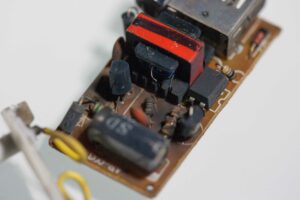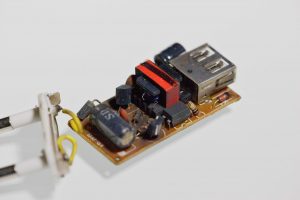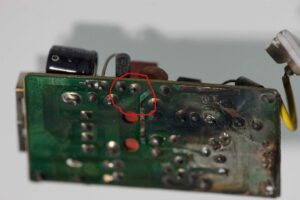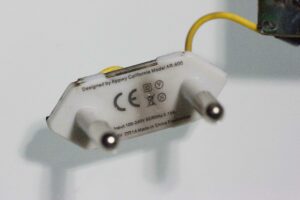One evening, daughter “K” was checking instagram. The phone was connected to a charger plugged into the wall socket. Suddenly there was a loud bang. With phone unplugged, the smelly charger was pulled from the scorched wall-socket.
Upon close examination, the charger wasn’t the Apple-charger it appeared to be. I decided to do a post-mortem to see how bad it was.
Irregardless of the burn-marks, it was really bad. Single-sided phenolic board, a simple discreet oscillator, a transformer and some passives. Oh, yes, an optocoupler provides feedback to the primary side.
In the designer’s defence, they did put some isolation distance between primary and secondary, except for the part where the secondary ground trace passes less than 0.5 mm from a trace that appears to be connected to a diode going from one mains terminal.

The source of the bang was the two transistors. The rightmost transistor lost a third of it’s case when the magic smoke left it in a hurry, while the left one fared a little better with just a burnt hole.
Designed by Appwy California, made by Flaxtronica? Not quite the genuine thing!
As a comparison, Ken Shirriff has made a teardown and analysis of a real Apple charger.



